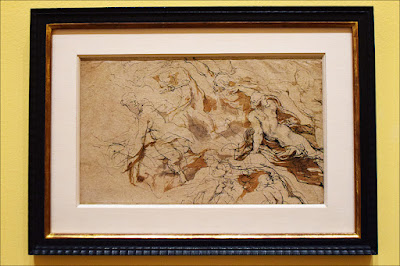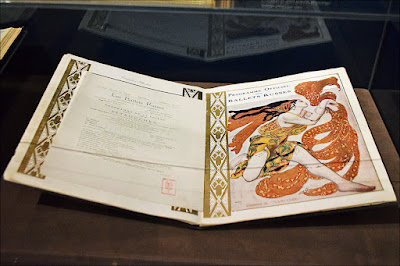Our thoughts and prayers are with the three young girls stabbed to death and eight wounded, six critically (including two adults) at a dance school in Southport, England, Monday morning. According to reports a 17-year-old was arrested at the scene, but supposedly no motive for the horrific crime is yet known. Fed up with the two-tier policing, government betrayal, and violence in their community, local protesters clashed with police near the site of the stabbings. May St. George, St. Edward the Confessor, and St. Edmund the Martyr protect and watch over you.
St. Edward the Confessor, ora pro nobis
Prayer for Victims of Terrorism
Loving God, welcome into your arms the victims of violence and terrorism. Comfort their families and all who grieve for them. Help us in our fear and uncertainty, and bless us with the knowledge that we are secure in your love. Strengthen all those who work for peace, and may the peace the world cannot give reign in our hearts. Amen.
July 30, 2024
Prayer for Southport, England
July 28, 2024
A Look at the Morgan Library and Museum’s Ongoing 2024 Exhibits (Part 2)
 |
| Portrait of a Man, Possibly a Self-Portrait, ca. 1660, black, white, and red chalk on brown paper, Peter Lely (1618-1680) |
Thankfully, I have zero interest in the Olympics. Instead of wasting my time watching the Eldest Daughter of the Church degrade itself before the whole world with its blatantly blasphemous and perverse opening ceremony, I spent my day reveling in traditional European high art at the Morgan Library and Museum in New York City.
[See Part 1]
Highlights from ‘Far and Away: Drawings from the Clement C. Moore Collection’ (June 28 through September 22, 2024)
 |
| Wooded Landscape with Shepherds, Sheep and Cottage, ca. 1760-63, watercolor and opaque watercolor, over graphite, on tan paper, Thomas Gainsborough (1727-1788) |
 |
| A Watermill, ca. 1833-36, pen and brown ink and watercolor, with white opaque watercolor and scratching out, over graphite, John Constable (1776-1837) |
 |
| Study of a Mackerel, ca. 1845, watercolor, over graphite, on hot-pressed paper, Joseph Mallord William Turner (1775-1851) |
 |
| View from Neptune's Grotto in Tivoli, ca. 1660-70, brush and gray and brown ink and wash, over black chalk, attributed to Johannes Jansz Collaert (ca. 1621/22-1679) |
 |
| A Wooded Landscape with Roma Gathered around a Fire, ca. 1778-80, pen and brown ink and wash, with opaque white watercolor, over black chalk, on brown paper, Thomas Gainsborough (1727-1788) |
 |
| The Entry of Christ in Jerusalem, ca. 1610, pen and brown ink, with gray, brown, and blue wash and white opaque watercolor, over traces of black chalk, David Vinckboons (1576-ca. 1632) |
 |
| Figures in a Wooded Landscape with a City in the Distance, ca. 1620-30, brush and blue ink, over black chalk, squared in black chalk, Isaak Major (ca. 1576-after 1642) |
 |
| Callisto's Pregnancy Revealed to Diana, ca. 1600, black and white chalk, with traces of blue and pink chalk, Hendrick Goltzius (1558-1617) |
 |
| The Birth of St. John the Baptist, ca. 1660-65, black, red, and white chalk, with pen and brown ink, and red, gray, and blue wash, on three pieces of joined paper, Jacob Jordaens (1593-1678) |
 |
| St. Lambert, ca. 1630-33, pen and brown ink and wash, and black chalk, Peter Paul Rubens (1577-1640) |
 |
| The Return of Cincinnatus to Rome, ca. 1590-1600, pen and brown ink and wash, and black chalk, with white opaque watercolor, Jan van der Straet (known as Johannes Stradanus) (1523-1605) |
 |
| The Mocking of the Spaniard, 1642, black chalk and gray wash on parchment, Pieter Jansz Quast (1605/6-1647) |
 |
| The East Room |
 |
| St. John the Baptist, ca. 1495-1500, marble, Giovanni Francesco Rustici (1474-1554) |
 |
| Bronze bust of Alfonso II d’Avalos (1502-1546), Marquis of Pescara and Vasto, by Annibale Fontana (1540-1587) |
 |
| Portrait of a Man with a Pink Flower, ca. 1480-85, oil on panel, Hans Memling (ca. 1440-1494) |
 |
| Kneeling male donor with his patron, St. William of Maleval, ca. 1467-70, oil on panel, Hans Memling (ca. 1440-1494) |
 |
| A peek inside the vault in J.P. Morgan's Study |
 |
| Carved Cassone with Base, wood (likely walnut), 64 x 23 x 25 inches, possibly acquired in 1906 |
 |
| Detail of elaborately carved sphinx and lion |
 |
| Detail of elaborately carved lion |
 |
| Detail of elaborately carved lion |
 |
| Perséphone, Paris: Édition Russe de Musique; Berlin: Russischer Musikverlag, [ca. 1934]. Cover illustration by Théodore Stravinsky (1907-1989) |
 |
| Bestiaire d'amour (Bestiary of love), in Old French, Northern Italy, ca. 1290, Richard de Fournival |
 |
| Les abus du monde (The Abuses of the World), in French, France, Rouen, ca. 1510, Pierre Gringore |
 |
| Liber de sapiente (Book on Wisdom), Charles de Bovelles, Paris: printed by Henri Estienne for Jean Petit, 1510 |
July 27, 2024
A Look at the Morgan Library and Museum’s Ongoing 2024 Exhibits (Part 1)
 |
| A Kitchen Cook, Reading, 1759, black, white, and red chalk, with smudging, on light brown paper, Jean-Baptiste Greuze (French, 1725-1805) |
Thankfully, I have zero interest in the Olympics. Instead of wasting my time watching the Eldest Daughter of the Church degrade itself before the whole world with its blatantly blasphemous and perverse opening ceremony, I spent my day reveling in traditional European high art at the Morgan Library and Museum in New York City.
[See Part 2]
Highlights from ‘Liberty to the Imagination: Drawings from the Eveillard Gift’ (June 7 through October 6, 2024)
 |
| Studies for the "Arrest of Samson," ca. 1609-11, pen and brown ink and brown and gray wash, Peter Paul Rubens (Flemish, 1577-1640) |
 |
| Sleeping Female Figure, 1890s, graphite with smudging and erasures, Auguste Rodin (French, 1840-1917) |
 |
| Warwick Castle from the Kenilworth Road, ca. 1831-32, watercolor, opaque watercolor, and black ink over black chalk with scratching, John Constable (British, 1776-1837) |
 |
| Portrait of Jenny Le Guillou, ca. 1835-40, brown wash over graphite, on paper brushed and darkened from adhesive, Eugène Delacroix (French, 1798-1863) |
 |
| Study for "Judas Returning the Thirty Pieces of Silver," ca. 1628-29, pen and brown ink and gray wash over black chalk, Rembrandt Harmensz van Rijn (Dutch, 1606-1669) |
 |
| St. John the Baptist, ca. 1620, red chalk and white opaque watercolor on pink prepared paper, Antonio d'Enrico, called Tanzio da Varallo (Piedmont, ca. 1575-ca. 1635) |
 |
| Study of Marcelle Lender Performing, 1893, red chalk over graphite, Henri de Toulouse-Lautrec (French, 1864-1901) |
 |
| Caernarfon Castle by Moonlight, ca. 1775, black ink and watercolor, with white opaque watercolor, Paul Sandby (British, 1725/31-1809) |
 |
| An Ambush Beside a Wood, ca. 1610, pen and brown ink with gray and brown wash, over traces of black chalk, Sebastiaen Vrancx (Flemish, 1573-1647) |
 |
| A Wooded Road, a Shepherd with His Flock on a Rise at the Right, ca. 1640-50, pen and brown ink and watercolor, Lucas van Uden (Flemish, 1595-1672) |
 |
| A View in Rome, ca. 1605, graphite and brush and brown wash, with touches of red chalk, Jan Willemsz Lapp (Dutch, 1585/90-1663) |
 |
| A Town Cryer with a Drum in a Village, Surrounded by a Crowd Listening, ca. 1624-25, brush and black ink and gray wash, over black chalk, Jan van Goyen (Dutch, 1596-1656) |
 |
| Tivoli, an Evening Study, 22nd May 1781, graphite, pen and ink, and wash, Francis Towne (British, 1739/40-1816) |
Highlight from 'Capturing Atmosphere: European Nature Studies in Oil' (November 14, 2023 through August 11, 2024)
 |
| Ischia and the Bay of Naples by Moonlight, ca. 1800, oil on paper, Pierre Henri de Valenciennes or circle |
 |
| Lion Entering a Cave, ca. 1860, watercolor, Gustave Doré (French, 1832-1883) |
 |
| Ida Lvovna Rubinstein, ca. 1911, oil on canvas, Howard Gardiner Cushing (1869-1916) |
 |
| Vaslav Nijinsky in "Afternoon of a Faun," modeled 1912, cast 1959, bronze, marble base, Auguste Rodin (1840-1917) |
 |
| Self-Portrait, ca. 1907, oil on canvas, ca. 1907, Natalia Goncharova (1881-1962) |
 |
| Illustration from "Skazka ob Ivane-tsareviche, Zhar-ptitse i o serom volke" Ivan Bilibin (1876-1942) |
 |
| Program for Les Ballets de Madame Ida Rubinstein, Académie Nationale de Musique et de Danse, May 1929 |
 |
| Comedia illustré souvenir program for the Ballets Russes' June 1911 season at the Théâtre du Châtelet, Paris |
 |
| Costume design, 1956, watercolor and pen on paper, Alexandre Benois (1870-1960) |
 |
| "Les Ballets Russes à Mogador" program, Paris, June 1922 |
 |
| Mme Ida Rubinstein, 1917, watercolor, gouache, and graphite on paper, mounted on canvas, Léon Bakst (1866-1924) |
 |
| "Adagio / Supplication of the Firebird" from Firebird, Igor Stravinsky (1882-1971) |
 |
| Michel Fokine, after 1909, lithograph, Valentin Serov (1865-1911) |






